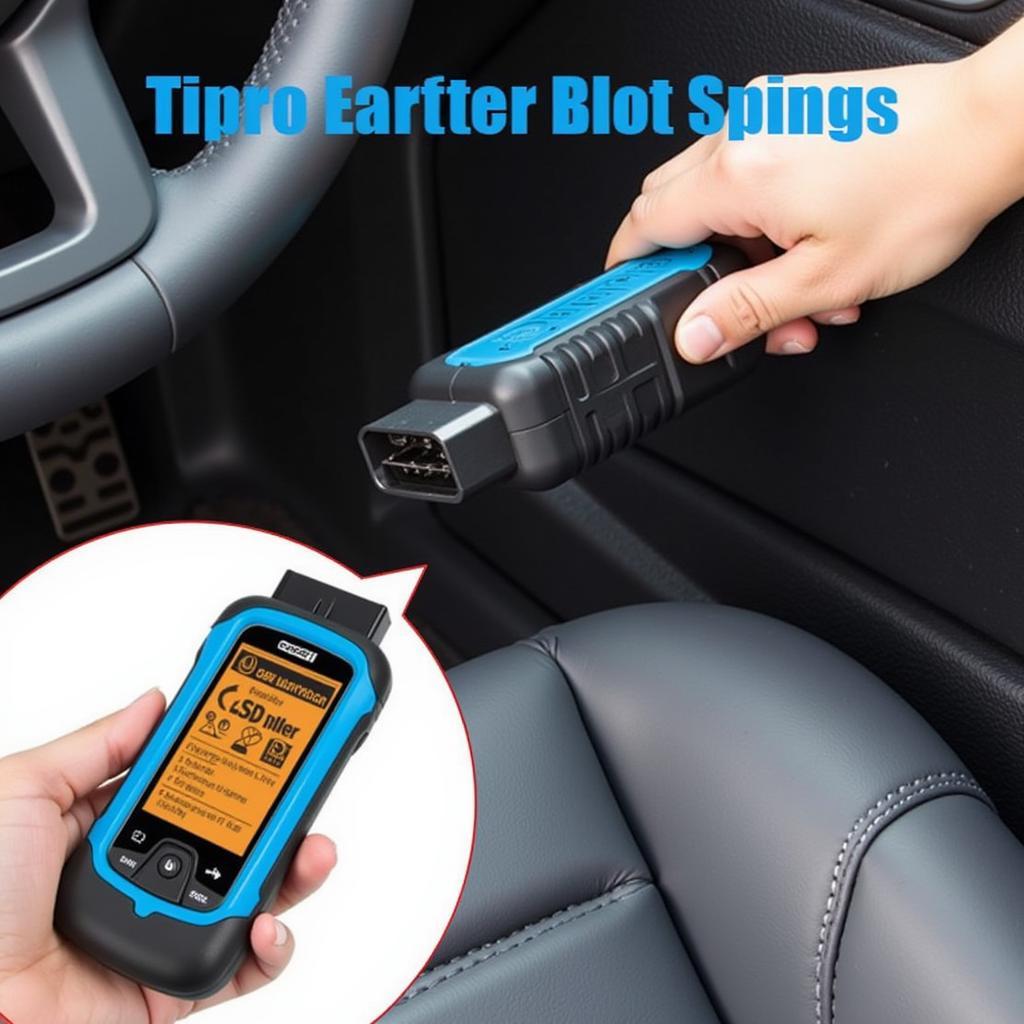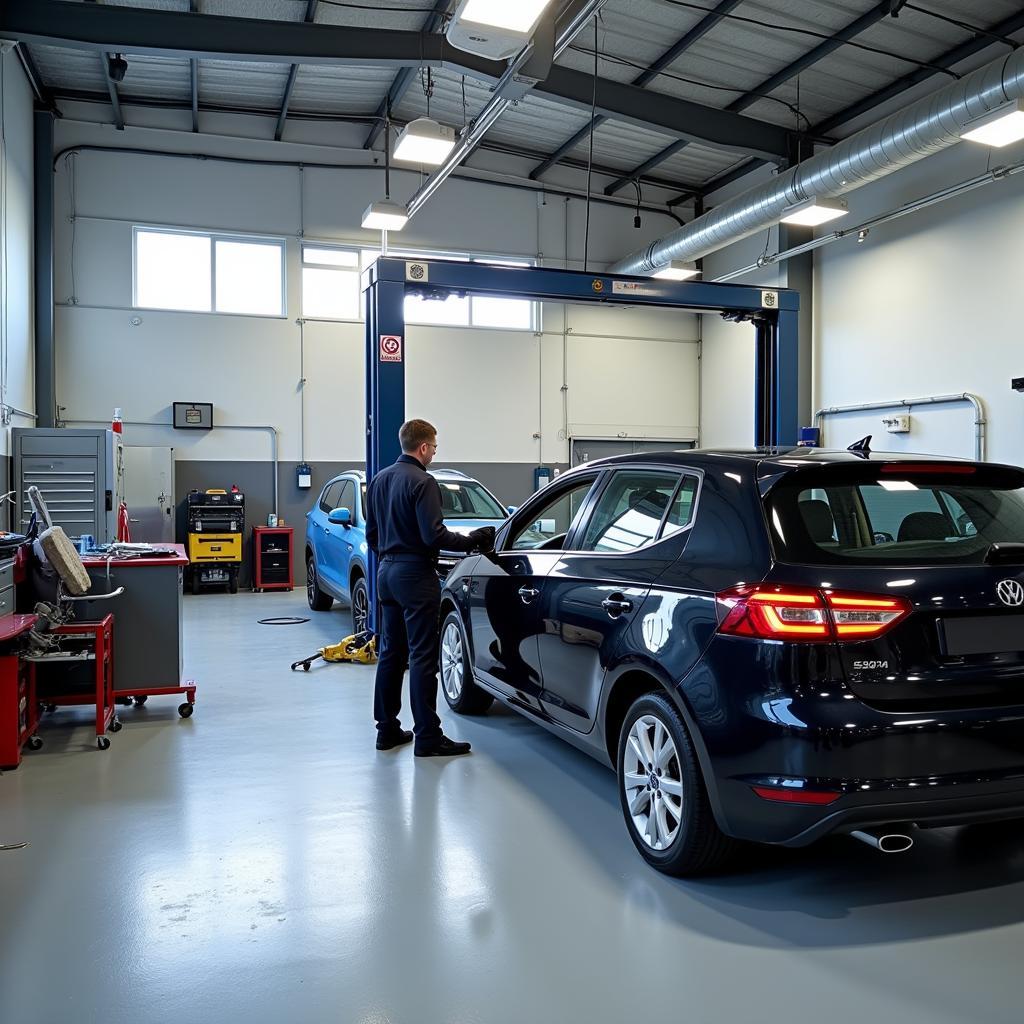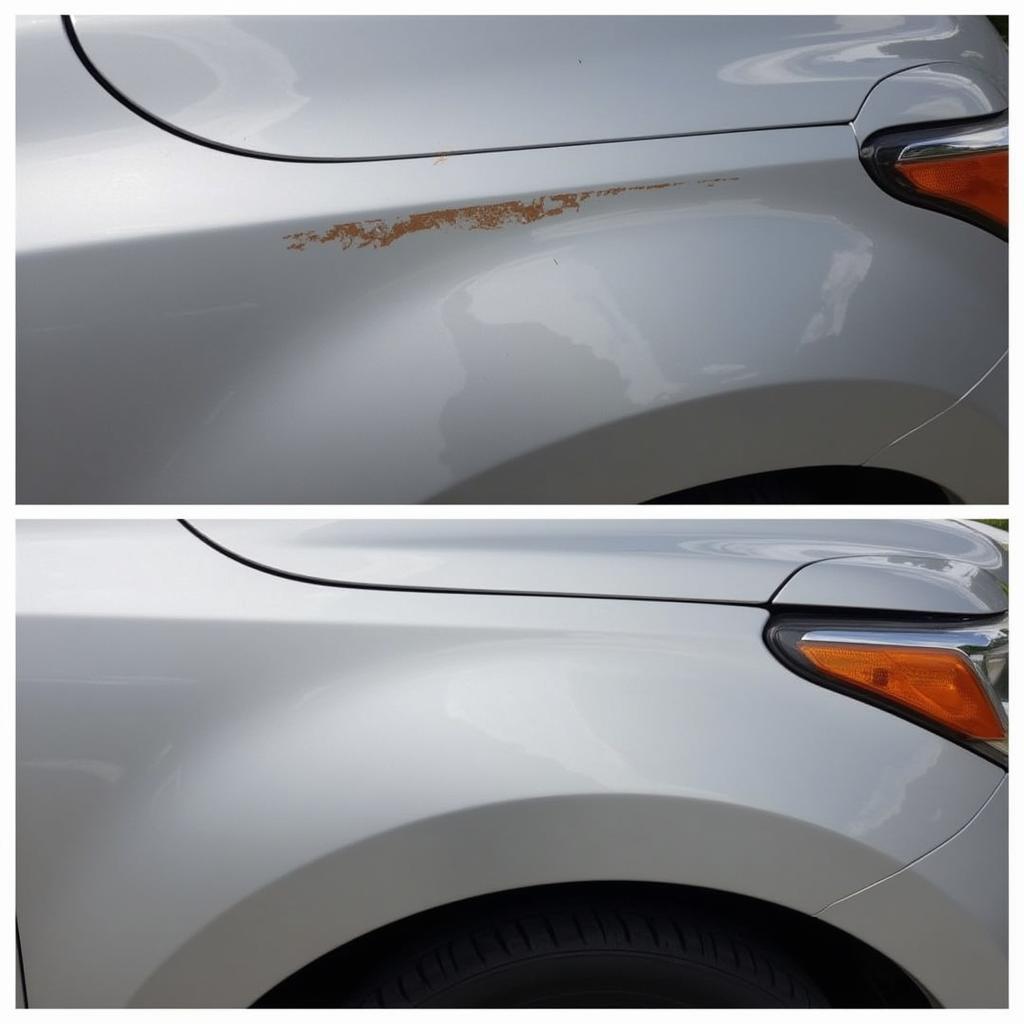
Connecting an OBD-II Scanner to the Diagnostic Port
Performing a diagnostic test on your car is crucial for identifying and resolving issues quickly and efficiently. Whether you’re experiencing performance problems, warning lights, or simply want to maintain your vehicle’s health, understanding how to do a diagnostic test can save you time and money.
Understanding how to perform a car diagnostic test empowers you to take control of your vehicle’s maintenance. This guide provides a comprehensive overview of the process, from understanding the basics to using advanced diagnostic tools. Want to know more about how these tests work? Check out how does a diagnostic test work on a car.
What is a Car Diagnostic Test?
A car diagnostic test involves retrieving data from your car’s onboard computer, the Engine Control Unit (ECU), which monitors various systems and sensors throughout the vehicle. This data provides valuable insights into the performance and health of your car’s components. The test can pinpoint the source of problems, from minor glitches to major malfunctions.
Why Perform a Diagnostic Test?
Diagnostic tests are essential for several reasons:
- Identifying Issues: They pinpoint the root cause of problems, saving you time and money on unnecessary repairs.
- Preventing Major Damage: Early detection of potential problems can prevent them from escalating into costly repairs.
- Improving Performance: Identifying and addressing performance issues can optimize your car’s fuel efficiency and overall performance.
- Monitoring Vehicle Health: Regular diagnostic tests can help you stay on top of your car’s maintenance needs.
You can find the best car diagnostic tool auto scanner to suit your needs.
How to Perform a Car Diagnostic Test Using an OBD-II Scanner
Using an OBD-II scanner is the most common way to perform a diagnostic test:
- Locate the OBD-II Port: This port is typically located under the dashboard on the driver’s side.
- Connect the OBD-II Scanner: Plug the scanner into the port.
- Turn on the Ignition: Turn the key to the “on” position without starting the engine.
- Read the Codes: The scanner will display diagnostic trouble codes (DTCs).
- Interpret the Codes: Use a reliable resource to understand the meaning of the codes.
- Clear the Codes: After addressing the issue, use the scanner to clear the codes.
 Connecting an OBD-II Scanner to the Diagnostic Port
Connecting an OBD-II Scanner to the Diagnostic Port
Understanding Diagnostic Trouble Codes (DTCs)
DTCs are alphanumeric codes that represent specific problems detected by the ECU. Each code corresponds to a particular issue within a specific system. For example, a code like P0301 indicates a misfire in cylinder 1. Understanding these codes is crucial for accurate diagnosis and repair. You can find more information about what car diagnostics tell you.
Advanced Diagnostic Techniques
Beyond basic OBD-II scanning, more advanced diagnostic techniques are available for in-depth analysis:
- Live Data Streaming: Observing real-time data from various sensors can provide insights into dynamic issues.
- Bi-directional Control: This feature allows you to activate certain components, such as fuel injectors or solenoids, for testing purposes.
- Oscilloscope and Multimeter: These tools can be used to measure electrical signals and diagnose complex electrical problems.
If you own a BMW, you might need a specialized BMW car diagnostic tool.
“Regular diagnostic testing is like giving your car a regular check-up,” says John Smith, Senior Automotive Technician at Smith’s Auto Repair. “It’s the best way to catch problems early and prevent major headaches down the road.”
Diagnostic Tests for Specific Car Makes and Models
While the basic principles of diagnostic testing remain the same, certain car makes and models may have specific procedures or require specialized tools. It’s essential to consult your vehicle’s owner’s manual or seek professional assistance for specific diagnostic information. If you’re in Bloemfontein, you might consider car diagnostic bloemfontein services.
“Don’t ignore warning lights,” advises Jane Doe, Certified Automotive Diagnostic Specialist. “They are your car’s way of telling you something is wrong. A diagnostic test can quickly determine the problem.”
Conclusion
Knowing How To Do A Diagnostic Test On A Car is an invaluable skill for any car owner. It empowers you to understand your vehicle’s health, identify problems early, and make informed decisions about repairs and maintenance. By utilizing the information and techniques outlined in this guide, you can keep your car running smoothly and avoid costly surprises.
FAQ
-
How often should I perform a diagnostic test? It’s recommended to perform a diagnostic test at least once a year or whenever you experience unusual performance issues or warning lights.
-
Can I perform a diagnostic test myself? Yes, with a basic OBD-II scanner and access to reliable information on DTCs.
-
What if I can’t interpret the codes? Consult a professional mechanic or use online resources for assistance.
-
Are all OBD-II scanners the same? No, they vary in features and capabilities. Choose one that suits your needs and budget.
-
Can a diagnostic test fix the problem? No, it only identifies the problem. Repairs are necessary to address the underlying issue.
-
What if the check engine light keeps coming back on? It indicates the problem hasn’t been fully resolved and further diagnosis is needed.
-
Can a diagnostic test tell me how long my car will last? No, it only assesses the current state of the vehicle’s systems.
Need help with your car diagnostics? Contact us via WhatsApp: +1(641)206-8880 or Email: [email protected]. Our 24/7 customer support team is ready to assist you.



